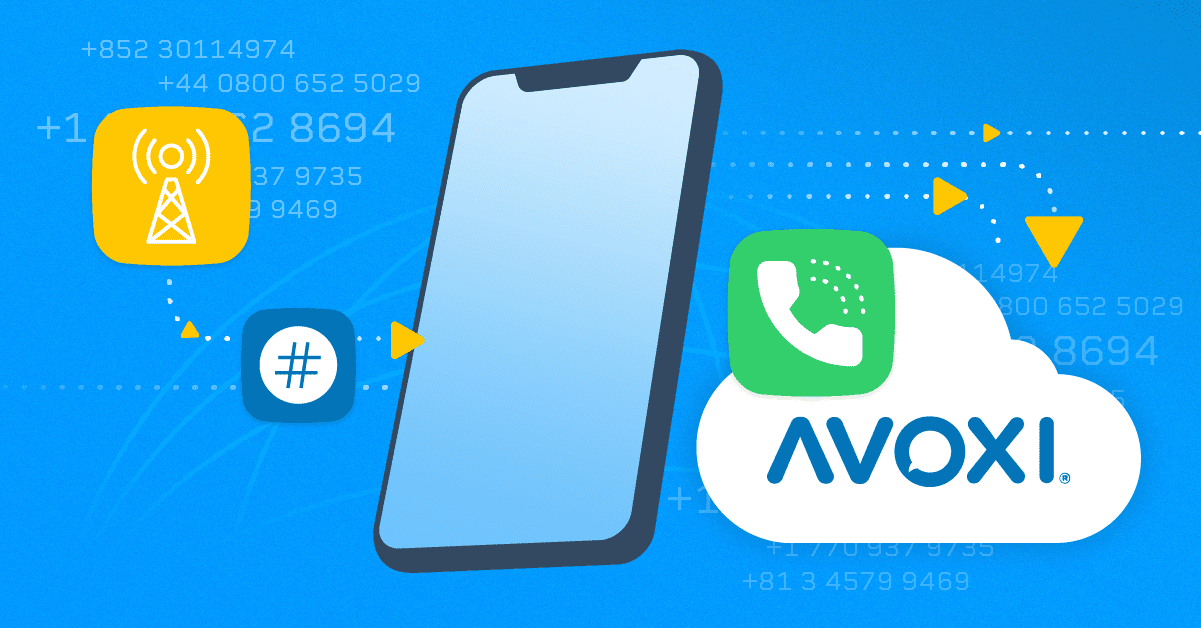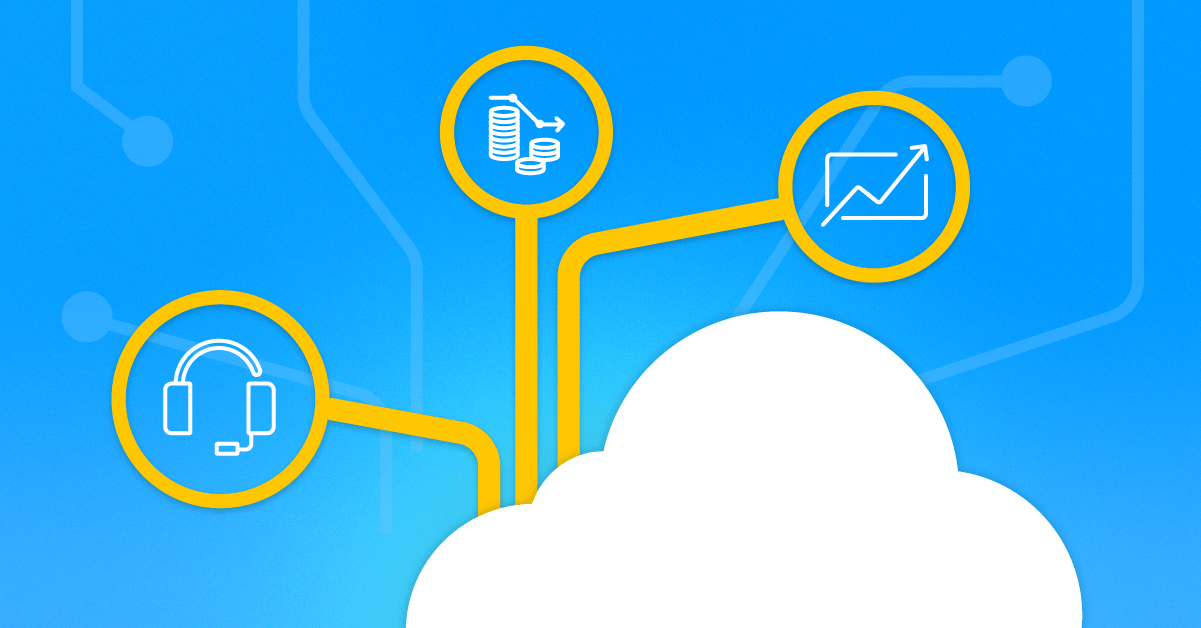VoIP Security: Best Practices and Enterprise Strategies for 2025
Voice over Internet Protocol (VoIP) has transformed enterprise communication by delivering flexibility, scalability, and cost efficiency that legacy systems cannot match. Yet, the same qualities that make VoIP attractive also expose organizations to new cyber threats and security risks. Fraud, intercepted calls, and service disruptions create both business liabilities and IT challenges. In 2023, telecom fraud losses totaled nearly $39 billion, underscoring the vulnerability of unsecured voice networks.
Enterprise leaders cannot afford to overlook these risks. A single gap can cause downtime, compliance failures, or customer dissatisfaction. This article outlines today’s most pressing threats, explains how encryption and authentication form a foundation, and highlights the best practices and advanced strategies for safeguarding against evolving VoIP threats.
Key takeaways
- VoIP security is a business priority that protects revenue, reputation, and compliance, not merely a technical detail.
- Encryption and authentication form the foundation of secure communications and are essential for meeting regulatory requirements.
- Core practices such as segmentation, monitoring, patching, and user training build resilience against common threats.
- Advanced measures, including zero trust, AI-driven detection, and supply chain vetting, elevate protection to an enterprise level.
- The right provider strengthens each layer by delivering compliance, global integrations, and continuous security assurance.
Why VoIP security matters for enterprises
VoIP security is not a box to check. It is a strategic cybersecurity concern that directly affects financial stability, reputation, and compliance posture. When attacks succeed, the consequences cascade through the business.
In 2024, enterprises lost an average of $4.88 million with every data breach. Fraudulent call activity can inflate telecom bills by millions in a matter of days, while denial of service (DoS) attacks can silence contact centers that rely on continuous uptime.
The damage to reputation is just as critical. Customers and partners expect secure, reliable communication. A publicized breach or fraud incident undermines confidence and causes clients to question whether their sensitive information is safe. Trust, once lost, is slow and expensive to rebuild.
Vendor sprawl also adds another layer of risk. Enterprises that manage multiple voice providers often face inconsistent security standards and fragmented visibility, leading to delayed incident response. Consolidating vendors under a single, security-verified platform reduces these gaps and helps teams maintain stronger control.
Compliance adds further urgency. Enterprises in healthcare, financial services, and global markets must align with standards such as HIPAA, GDPR, or PCI DSS. A single lapse in securing VoIP traffic or records can lead to significant fines and legal exposure.
The takeaway is simple: securing VoIP protects revenue, the customer experience, and long-term competitiveness. With that foundation in mind, the next step is to understand which threats are putting your enterprise at risk today.
Top VoIP security threats in 2025
To defend your enterprise, you need to know where the risks lie. The VoIP threat landscape continues to evolve as cyber attacks become more sophisticated and exploit gaps in enterprise systems. Here are the most common VoIP security threats:
- Eavesdropping on unencrypted calls: Hackers can intercept VoIP packets and listen to conversations, putting sensitive data and customer trust at risk.
- Toll fraud: Criminals reroute calls through compromised systems, leaving enterprises with inflated international bills that can reach hundreds of thousands of dollars.
- Caller ID spoofing and vishing: Fraudsters impersonate trusted phone numbers to trick employees or customers into sharing credentials or approving payments.
- Spam over IP telephony (SPIT): Automated robocalls overwhelm networks, disrupt operations, and frustrate customers who expect reliable service.
- SIP vulnerabilities: Weaknesses in the Session Initiation Protocol (SIP) create openings for unauthorized access, account takeovers, or call hijacking.
- Denial of service (DoS) attacks: Attackers flood VoIP servers with traffic until systems slow down or shut off, halting critical business communications.
- AI-driven fraud and phishing: Hackers use AI to generate convincing voice messages, scale phishing attempts, and automate large-scale fraud campaigns.
- Supply chain compromises: High-profile incidents, like the 2023 3CX breach, demonstrate how malware can infiltrate trusted vendor software and spread to enterprise systems.
Encryption and authentication in VoIP
The threats outlined above—including eavesdropping, spoofing, and service disruption—show why enterprises require a strong technical foundation. That foundation begins with encryption and layered authentication.
Why TLS and SRTP are essential
To keep conversations private, enterprises must protect both signaling and media streams. Transport Layer Security (TLS) secures the signaling layer that establishes, routes, and terminates calls. Secure Real-Time Transport Protocol (SRTP) protects the voice packets that carry conversations. Together, TLS and SRTP provide confidentiality, integrity, and authentication across the entire communication path.
For enterprises in regulated industries, these security protocols also serve as compliance enablers. Encrypting signaling and media reduces the risk of exposing sensitive data and aligns with regulatory requirements, such as GDPR and HIPAA. This is why TLS and SRTP are considered the baseline for enterprise-grade deployments.
Common encryption gaps
Even with TLS and SRTP in place, many environments still leave weaknesses cybercriminals can exploit. These gaps often appear when:
- Older desk phones or softphones do not support encryption.
- Systems rely on outdated or weak ciphers.
- Metadata, such as call records, remains exposed even when voice streams are protected.
Encryption alone does not provide complete protection. Enterprises must apply it consistently and eliminate the blind spots where attackers can still gain visibility.
Strengthening authentication
Encryption protects conversations, but it does not prevent unauthorized access to accounts or data. To close that gap, enterprises should implement strong authentication through the following controls:
- SIP digest authentication to validate call requests
- Multi-factor authentication (MFA) for administrative accounts
- Password policies that enforce complexity, rotation, and lockouts after failed attempts
When you combine encryption with strong authentication, you protect both the data and the user identities that power your communication systems. This layered approach makes it much harder for attackers to succeed.
VoIP security vs. traditional phone systems
Encryption and authentication make VoIP more secure, but many leaders still compare it to the legacy systems they used before. Public Switched Telephone Network (PSTN) and Primary Rate Interface (PRI) lines relied on closed, physical infrastructure that provided phone security through limited exposure. While this design reduced certain risks, it also restricted flexibility and scale. Comparing the two clarifies both the unique dangers of VoIP and the opportunities to strengthen its defenses.
| Attack surface | Runs over the internet through VoIP networks, exposed globally | Closed circuits, limited exposure |
| Common risks | SIP exploits, packet sniffing, DoS, spoofing | Physical tampering, insider abuse |
| Flexibility | Scales quickly across regions | Requires separate contracts and hardware per region |
| Security potential | Stronger when combined with encryption, monitoring, and vendor controls | Limited, often unmanaged |
While VoIP introduces new risks, it also creates opportunities for stronger protection. By applying encryption, continuously monitoring traffic, and partnering with providers that deliver updated defenses and compliance support, enterprises gain unmatched advantages. Critically, centralized VoIP management also enables consistent security controls worldwide, which decentralized PSTN systems cannot achieve.
7 core VoIP security best practices
Understanding VoIP’s risks is only the first step. The next step is acting on them. These best practices help enterprises protect their communications, maintain compliance, and build resilience against evolving threats.
1. Encrypt signaling and media with TLS and SRTP
Ensure all calls, endpoints, and systems use TLS and SRTP. This reduces the risk of eavesdropping and fraud, helps meet regulatory requirements, and keeps customer data private.
2. Implement strong authentication controls
Secure every login with multi-factor authentication and strong password policies. These controls stop unauthorized users from accessing accounts and prevent costly fraud attempts.
3. Segment networks with VLANs, firewalls, and SBCs
Strengthen network security by separating VoIP traffic from other business systems. Segmentation limits lateral movement during an attack and improves both call quality and reliability across your network.
4. Use session border controllers (SBCs)
Deploy SBCs to enforce access controls, block denial of service attempts, and maintain interoperability between systems. They also work with SIP trunking to protect traffic between internal networks and public connections.
5. Monitor traffic and conduct regular security audits
Track call activity and system performance to detect anomalies early. Combine continuous monitoring with scheduled security audits to identify and fix vulnerabilities before attackers exploit them.
6. Patch and update VoIP infrastructure regularly
Apply updates to PBXs, SIP endpoints, and softphones as soon as they’re released. A consistent patch cycle keeps infrastructure resilient against emerging exploits and service disruptions.
7. Train users to identify social engineering risks
Educate employees about phishing, vishing, and password safety. Awareness training transforms users into an active defense layer that helps prevent threats from reaching your network.
Together, these steps form a practical foundation for enterprise VoIP security. Once these controls are in place, you can move toward advanced measures that strengthen protection at a strategic level.
Enterprise VoIP security: Advanced measures
Once core practices are in place, enterprises must adopt advanced strategies to defend against sophisticated threats and ensure global resilience. These measures extend beyond technology basics to protect revenue, customer trust, and regulatory compliance at scale.
Zero-trust access and least privilege segmentation
Traditional perimeter defenses are no longer enough. A zero-trust model assumes that no user or device is trustworthy by default. By applying identity-based access and limiting permissions to what each role requires, you reduce the chances of both insider misuse and external compromise. Least privilege segmentation ensures that even if one account is breached, the attacker cannot move freely across your systems.
AI-driven threat detection and anomaly analytics
Manual monitoring cannot keep pace with the scale of global VoIP traffic. Artificial intelligence and machine learning tools analyze call behavior in real time to detect anomalies. They can spot unusual activity, such as spam bursts, toll fraud attempts, or sudden changes in call routing, far faster than human analysts. This enables quicker responses and minimizes disruption.
Secure vendor integrations and supply chain risk assessments
Enterprise VoIP environments rarely operate in isolation. They connect with multiple vendors for software, hardware, and services, and each integration introduces potential risk that could compromise the entire VoIP solution. Incidents like the 2023 3CX breach underscore this risk, demonstrating how attackers can exploit supply chain vulnerabilities. To mitigate this exposure, vetting providers for certifications such as SOC 2 and ISO 27001, reviewing their service level agreements (SLAs), and monitoring their update cadence are essential steps. Strong vendor management and proactive monitoring can keep enterprise VoIP systems secure.
STIR/SHAKEN for caller ID validation
Caller ID spoofing continues to drive fraud and vishing campaigns. The STIR/SHAKEN framework validates caller identities, helping enterprises restore trust in outbound communications. By adopting this framework, you reduce the risk of impersonation and protect both your brand and your customers.
Managed security services
Even large in-house teams can benefit from external expertise. Managed security services provide around-the-clock monitoring, audits, and incident response. Partnering with a provider that specializes in VoIP security ensures you can scale protections globally and respond quickly to emerging threats.
How to choose a secure VoIP provider
Even with strong internal practices, your overall security depends heavily on the provider you choose. A secure VoIP partner does more than deliver call quality—they extend your defenses through advanced security features, encryption, monitoring, compliance, and integration with the rest of your IT stack.
The following steps can help you select a reliable VoIP service provider:
Verify encryption, audit, and compliance capabilities
Every provider should guarantee end-to-end encryption using TLS for signaling and SRTP for media. They should also undergo regular security audits and align with international frameworks, such as SOC 2, ISO 27001, and GDPR. These commitments ensure the provider protects sensitive data at the same level you do internally.
AVOXI advantage: AVOXI enforces TLS and SRTP across its platform and completes regular third-party audits. The service is GDPR-compliant and HIPAA-ready, enabling enterprises in regulated industries to meet their obligations confidently.

Ensure SLA-backed updates and breach response plans
Security must be supported by contractual guarantees. Your provider should back its services with service level agreements that cover uptime, patch cycles, and incident response. This ensures accountability and reduces the risk of prolonged outages or slow remediation after a breach.
AVOXI advantage: AVOXI provides 24/7 follow-the-sun support, SLA-driven uptime, and proactive security monitoring. This combination minimizes disruption and assures teams that risks are being addressed continuously.
Evaluate integration with enterprise IT and SOC tooling
Enterprises need visibility across their entire IT environment. A strong VoIP provider integrates directly with contact center platforms, unified communications systems, and security information and event management (SIEM) tools. This makes it easier to centralize monitoring and enforce consistent policies.
AVOXI advantage: AVOXI integrates with leading platforms, such as Genesys, NICE, Five9, Amazon Connect, Microsoft Teams, and Zoom. These integrations, combined with VPN connectivity options, enable enterprises to manage security and performance within their existing ecosystems rather than add another silo.
Request proof of certifications and compliance
Do not accept claims without evidence. Ask providers to share audit reports, penetration testing results, and compliance attestations. Transparent documentation gives you confidence that their controls consistently match the standards they advertise.
AVOXI advantage: AVOXI provides documented compliance reports and undergoes ongoing audits to validate its security posture. Enterprises gain assurance that their global voice infrastructure is supported by rigorous governance and accountability.
Build an enterprise-ready VoIP security framework
Enterprise VoIP security is most effective when implemented in layers. Each measure reinforces the others, creating resilience against both common and advanced threats. A simple way to think about this approach is: encrypt → isolate → monitor → educate → partner securely.
- Encrypt signaling and media to protect conversations and data.
- Isolate VoIP traffic with segmentation and session border controllers to contain risks.
- Monitor continuously to detect anomalies and validate defenses.
- Educate users to reduce human error and strengthen your first line of defense.
- Partner securely with providers that deliver compliance, global reach, and integrated monitoring.
When you combine these steps, you move from piecemeal defenses to a comprehensive, integrated framework. This results in more than technical protection. It builds customer confidence, ensures business continuity, and maintains compliance across global markets.
AVOXI strengthens each layer of this framework through enterprise-focused security, delivering encryption by default, integrating with leading UCaaS and CCaaS systems, and providing visibility into anomalies with call insights. It also reduces complexity by consolidating vendors and backs its service with compliance certifications and an SLA-driven reliability guarantee.
To build this future-proof framework, the next step is straightforward: assess your current provider against these standards and see where the gaps remain. If you're ready to strengthen your enterprise voice environment, request a demo to see how AVOXI secures global VoIP at scale.
FAQ about VoIP security
TLS protects signaling, while SRTP secures the voice stream. Together, they keep calls private and maintain data integrity. Enterprises should ensure both protocols are enabled across all devices and services to meet compliance requirements and eliminate common interception risks.
Enterprises should patch VoIP systems as soon as updates are released and schedule audits at least twice a year. Regular checks uncover vulnerabilities before attackers can exploit them. Combined with prompt patching, audits help ensure defenses remain continuously effective over time.
AI strengthens defenses by analyzing call behavior in real time. It can detect unusual traffic patterns, fraud attempts, or sudden routing changes faster than manual monitoring. By adopting AI-driven analytics, enterprises accelerate response times and minimize the impact of complex threats.
Additional Resources to Help You Get the Needle Moving

PSTN Replacement
Guide to Voice Termination Services

Retain Phone Number
International
Number Porting

Virtual Phone Line
Benefits of
SIP Trunking

